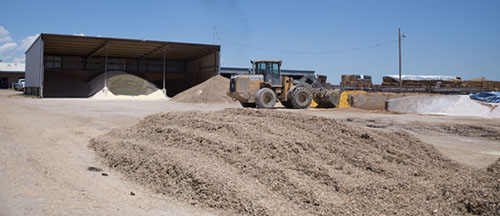
It's no secret that feed costs make up a significant portion of expenses on the farm, and in tight financial seasons, we all look to this area. What things can be reduced? What can be cut? How can we lose fewer nutrients before they make it in front of the cows?
Speaking at the Northeast Dairy Producer's Conference last week, Dave Greene, technical field specialist with Diamond V, suggested that the greatest feed center inefficiencies exist in management and shrink. The key Greene says is understanding your specific operation's strengths and weaknesses and playing to the strengths while reducing the inefficiencies.
"Most times a management change will do more good than anything else," he conveyed to producers attending the biennial conference. For example, "proximity of ingredients to the loading area is where the most efficiency is gained."
Greene suggested that the time wasted bringing ingredients from storage to mixing can be reduced by staging ingredients near the mixing and loading locations. Staging reduces tractor time and labor needs. Ten minutes should be a good goal for preparing and mixing a single load.
Reducing shrink remains another area of improvement available to most dairies. Before jumping to build a new feed center or purchasing new equipment, he suggests producers take the few extra minutes each day to measure where they are at in regards to shrink.
"The average farm's shrink is 6.5 to 8.5 percent across all ingredients, and the goal should be 4 to 5 percent," he said. "These numbers are real and must be managed."
As the food factory of the farm, feed centers are a perfect area to monitor for continual improvement. Whether efficiencies of time, labor, ingredients or accuracy, feed center management begins with measuring and ends with a consistent and balanced ration for the cows.

The author is an associate editor. She covers feeding, milk quality, youth activities and heads up the World Dairy Expo Supplement. Maggie was raised on a 150-cow dairy near Valley Center, Kansas, and graduated from Kansas State University with degrees in agricultural communications and animal sciences.







